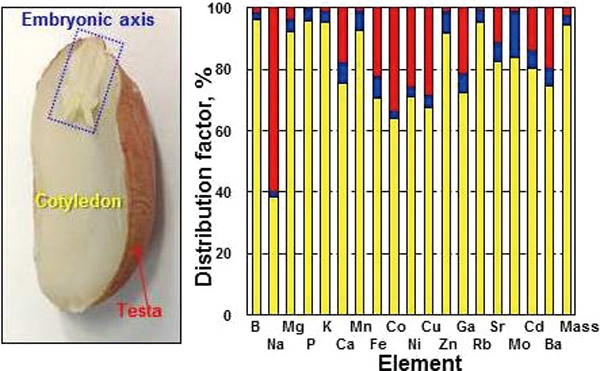Abstract
Eighteen elements in the cotyledon, the embryonic axis, and the testa of peanut seeds were determined by inductively coupled plasma mass spectrometry (ICP-MS) after microwave acid digestion, while the gravimetric standard addition with internal standard was applied for the calibration of the elemental concentrations. The detection limit and the procedure blank value for each element were low enough to ensure the precise analysis of the elements, with a relative expanded uncertainty of less than 5%. The concentrations of the elements in peanut seed samples covered 6 orders of magnitude from approximately 0.01 mg kg−1 of Co to approximately 7000 mg kg−1 of K. The correlation coefficient factor was around 0.98 for the elemental concentrations in peanut seeds grown in Japan and those grown in China, indicating a good correlation. Most of the elements distributed in the cotyledon in large amounts because of the cotyledon’s relatively high mass fraction. By contrast, Na, Ca, Fe, Co, Ni, Cu, Ga, Sr, Cd, and Ba were apparently enriched in the testa and the relative enrichment factor (REF) values of the elements were over 4. The relative enrichment of Mo, Fe, Zn and other elements was observed in the embryonic axis samples with REF values over 2. The relative enrichment of Cd in the testa of peanut seed indicates that about 15 to 25% of the Cd intake through peanut seeds could be effectively lowered by removal of the testa (roughly 2.5 to 3.5% of the peanut seed).
